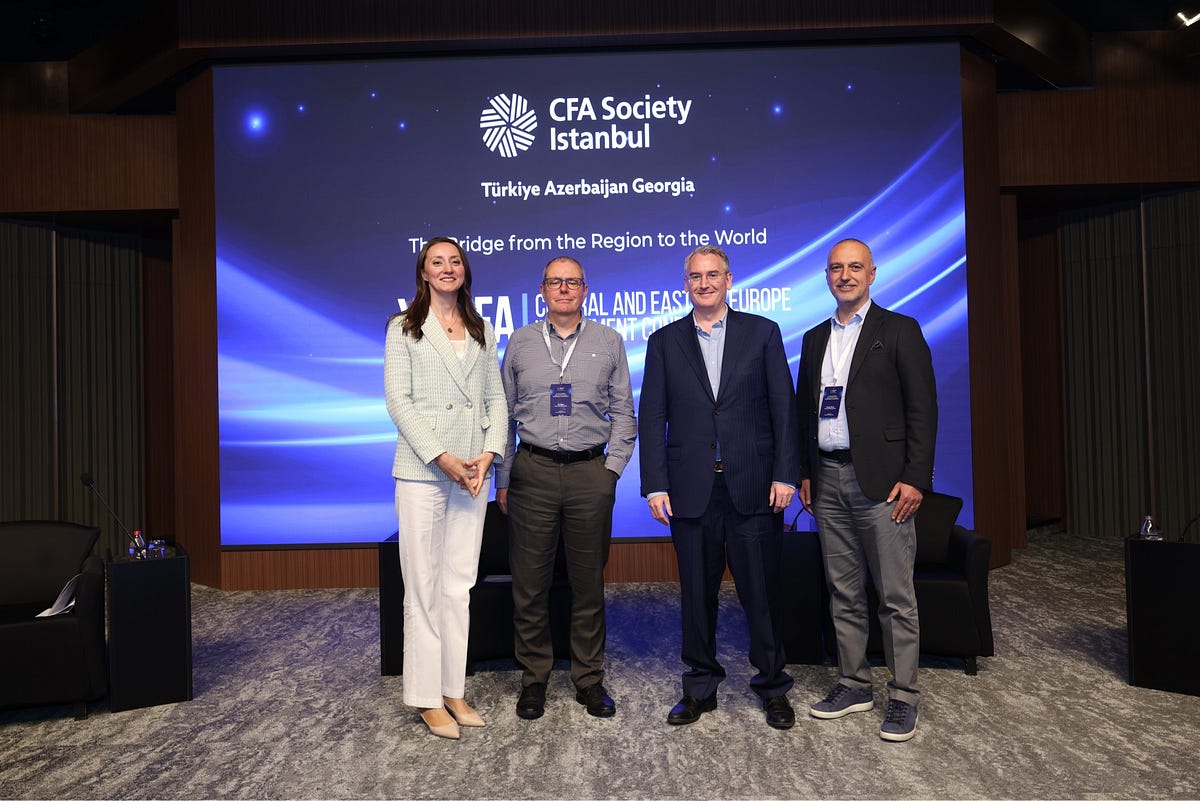Venture Capital News
Medium
195

Image Credit: Medium
Stockholm’s Early-Stage Edge, and What’s Missing
- Stockholm has a high startup density in Europe, ranking #2 in unicorns per capita in Europe behind Estonia.
- Sweden provides low corporate tax rates, real R&D incentives, and a smoother visa process for startups.
- The Stockholm ecosystem is characterized by close-knit networks among founders, angels, VCs, and public-sector players.
- The angel community in Stockholm is robust, with many repeat founders from successful companies like Klarna and Spotify.
- While early-stage funding is strong in Stockholm, late-stage rounds often rely on foreign investors, leading to challenges.
- Stockholm lacks a strong state-backed co-investment model at the Series B and C level, contributing to capital challenges.
- There is a shortage of commercial leadership talent in Stockholm, affecting growth and retention of startups.
- Diversity in funding and underrepresented founders remain a challenge in Stockholm's ecosystem.
- The cost of living in Stockholm is increasing, posing challenges for junior hires and early-stage teams.
- Despite challenges, Stockholm's AI startup scene is growing, with companies like Sana and Depict leading the way.
- Investors see potential in Stockholm's early-stage pipeline, but a gap in late-stage capital presents opportunities for growth.
Read Full Article
11 Likes
Medium
328

Image Credit: Medium
MENA Emerges as a Global IPO Powerhouse: Digital Innovation and Regulatory Strength Drive Growth
- MENA region emerges as a dynamic hub for capital markets and digital transformation amidst a global decline in IPO activity in 2024.
- MENA saw a 2.5x increase in IPO activity with higher average deal sizes, contributing 5% of global IPO volumes but capturing 10% of global proceeds.
- Robust regulatory frameworks, including minimum free float requirements and digital-first companies, have propelled MENA's IPO landscape.
- Outlook for MENA's IPO market is positive with over 10 digital-first companies expected to go public in 2025, reflecting the region's digital transformation.
Read Full Article
19 Likes
Medium
349

Image Credit: Medium
Harlan + Holden Coffee: Minimalist Vibes and Bold Brews in the Heart of BGC
- Harlan + Holden Coffee offers a unique experience with its minimalist design, clean lines, and a perfect balance of calm and energy in the atmosphere.
- The cafe is known for its bold and balanced coffee blends that cater to both casual drinkers and connoisseurs, reflecting their dedication to quality.
- Located in One Bonifacio High Street Mall in BGC, the cafe's attention to detail in design and its selection of light pastries make it an inviting space for coffee breaks and meet-ups.
- Key items to try at Harlan + Holden Coffee include their bold Espresso, smooth Flat White, refreshing Cold Brew, and light, fresh pastries, making it a quality destination for coffee enthusiasts and those seeking a peaceful moment in the city.
Read Full Article
21 Likes
Medium
60

Image Credit: Medium
Future of Skills In Digital Age of Investment Management
- Panel discussion on the evolving talent landscape in investment management in the digital age of AI and Web 4.0.
- Shifts in asset management include dwindling alpha in public markets, data explosion, and rise of private markets.
- Future of asset management involves collaboration between investment professionals, data scientists, and AI agents in a multidisciplinary setup.
- Asset management will evolve with smart systems, private capital, and human-machine collaboration in a Web 4.0 era.
Read Full Article
3 Likes
Medium
72
Image Credit: Medium
Scaling Without Selling Out: The Rise of Non-Dilutive Capital in Startups
- Grammarly opted for non-dilutive capital to fund its growth, avoiding giving up ownership through a unique financing deal.
- Non-dilutive, revenue-based financing is becoming more popular among startups for its ability to secure capital without sacrificing ownership or control.
- Companies like Lemonade, Ro, Clearco, and Pipe have successfully utilized non-dilutive funding to scale up while maintaining full ownership.
- Non-dilutive financing works best for startups with steady, predictable income, offering a sustainable way to grow without compromising control.
Read Full Article
4 Likes
Medium
45

Image Credit: Medium
HardTech Reads: The AI & Robotics Revolution vol.33
- The AI and Robotics Revolution is in full swing with advancements like live humanoid boxing matches in China, increased autonomy in surgical robots, and US executive orders to revive nuclear and uranium supply.
- Agibot, a Chinese startup, is rapidly mass-producing humanoid robots, challenging Tesla's timeline for mass production.
- AI-powered robots are entering operating rooms with growing autonomy, which could help address the global shortage of surgeons.
- Companies like John Deere are targeting full-farm automation by 2030 to improve productivity and address labor shortages.
- InventWood's Superwood, stronger than steel, could revolutionize construction and aerospace materials with its high strength-to-weight ratio.
- Robot.com, based in Medellín, has become a global automation leader with over 500 robots deployed across the US and expanding internationally.
- The robotics market is shifting towards specialized robots for specific tasks, driving rapid growth in the sector.
- Recent funding rounds highlight companies like Persona AI, The Nuclear Co., and CX2 investing in humanoid robots, nuclear energy, and electronic warfare technologies.
- The industry is maturing with a focus on practical solutions and real-world applications, as seen at the Automate 2025 event.
- The article emphasizes the need for Australia to invest in domestic space manufacturing for economic prosperity and national security.
Read Full Article
2 Likes
Medium
40

Image Credit: Medium
How Deep Tech Founders Turn LLMs Into Infrastructure
- LLMs have become accessible and widely utilized in creating products, posing challenges in differentiation.
- Distinguishing between using LLMs as products versus infrastructure is crucial for defensibility and functionality.
- AI startups often fall into two categories based on their approach to leveraging LLMs.
- Real-world examples like Perplexity and Cursor demonstrate innovative uses of LLMs as infrastructure.
- Perplexity's architecture incorporates real-time web crawling and document retrieval for fresh and verifiable information.
- Cursor integrates LLMs into coding workflows, facilitating both developers and non-technical users in software creation.
- Gumloop's drag-and-drop interface enables users to create AI-driven workflows, offering flexibility and adaptability.
- The rise of LLMOps architectures emphasizes the importance of structure and operationalization in AI product development.
- The layered leverage in AI product development includes grounding models with external data, structuring logic, and optimizing speed and responsiveness.
- Successful AI product development requires a blend of product thinking and technical architecture to translate capabilities into user experience effectively.
Read Full Article
2 Likes
Medium
113

Agentic AI in Cybersecurity: From Reactive Defense to Proactive Resilience
- Agentic AI in cybersecurity involves autonomous software agents that can perceive, reason, and act independently in complex environments, shifting from reactive to proactive defense.
- Agentic AI is characterized by autonomy, proactivity, adaptability, and context-awareness, enabling it to make decisions and execute actions in real-time.
- This technology actively hunts for vulnerabilities, conducts contextual analysis to prioritize threats, issues early warnings, and delivers rapid responses, reducing mean time to containment.
- Agentic AI applications include automating SIEM triage, adaptive access control, autonomous incident response, and proactive vulnerability management.
- However, attackers are also leveraging agentic AI for autonomous malware and AI-generated social engineering, intensifying the cybersecurity landscape.
- Challenges with agentic AI include explainability, defining autonomy boundaries, addressing bias, and balancing automation bias with human skills.
- The future of cybersecurity involves human-AI collaboration, where agentic AI accelerates detection and response, empowers analysts, and enhances organizational resilience.
- Steps for adopting agentic AI include assessing needs, evaluating solutions, defining autonomy boundaries, investing in training, and continuously monitoring performance.
- Agentic AI represents a new era of proactive security, automating threat detection and response to help organizations stay ahead of evolving threats in cybersecurity.
Read Full Article
6 Likes
Saastr
31

Top SaaStr Posts and Pods of the Week: The Great AI Reset, Marc Benioff on M&A and AI,
- Top SaaStr Posts of the Week include insights on Series B expectations, importance of moving faster due to AI impact, future of sales teams incorporating AI, lessons from UiPath's growth, and the need for a reset in AI startups.
- Top Vids + Pods feature discussions on the necessity of faster actions in SaaS and AI integration, insights from Marc Benioff on AI, M&A and SaaS future, how AI is transforming sales, key learnings from the new SaaStr AI, and a live summit on SaaStr + AI in 2025 GTM Stage.
Read Full Article
1 Like
Medium
40

Image Credit: Medium
Should You Join a Large VC Firm or a Small Emerging Fund?
- Joining a large VC firm provides structure, network, and access to top deals but may lack autonomy and fast progression, while a small fund offers hands-on experience with quicker career growth and more responsibility.
- Venture capital firms have structured hierarchies with defined roles, such as Analysts, Associates, Principals/Vice Presidents, and Partners, with varying responsibilities based on firm size.
- At large VC firms, junior members focus on research and due diligence, while senior investors make investment decisions, whereas roles at small funds involve wearing multiple hats for deal execution, founder support, and fund operations.
- In large firms, clarity of responsibilities exists but with less autonomy, contrasted by small funds offering broader exposure and faster career advancement, albeit with more responsibility early on.
- Pros of joining a top-tier VC firm include credibility, access to high-profile deals, structured learning, stability in compensation, and leading investment rounds that shape future unicorns.
- Cons of large VC firms include delays in decision-making roles for junior investors, limited autonomy, intense internal competition for promotions, and a long path to senior partnership.
- Small VC funds offer varied roles from deal sourcing to fund operations, quick career progression, hands-on decision-making, deep relationships with startups, but come with lower compensation, less stability, and brand recognition challenges.
- Top global VC firms include Sequoia Capital, Andreessen Horowitz, Kleiner Perkins, Tiger Global Management, and SoftBank Vision Fund, known for massive funding power and influential networks.
- Microfunds like Passion Capital, 500 Global, Microtraction, Wollef Ventures, and GMO VenturePartners focus on early-stage investments, niche markets, and specific industries, providing crucial capital and mentorship to startups.
- Choosing between large VC firms and small emerging funds depends on career goals, risk tolerance, and work preferences, with trade-offs in autonomy, career progression, financial stability, and decision-making authority.
Read Full Article
2 Likes
Medium
39

Image Credit: Medium
The Rise of Solo Capitalists: Why More VCs Are Going Independent in 2025
- Solo Capitalists, the new wave of venture investors, are reshaping the startup world in 2025 by running independent funds and working directly with founders.
- These independent investors have gained prominence, managing funds ranging from $10 million to over $100 million, with some becoming household names in the industry.
- The shift towards Solo Capitalists has been facilitated by online connectivity, AI tools for deal analysis, and social media as a platform for knowledge sharing and building followings.
- Solo VCs leverage AI to analyze startups efficiently and make faster investment decisions compared to traditional firms with committees and bureaucracy.
- The personal brand, expertise, and quick decision-making of Solo VCs set them apart, making them valuable partners for founders seeking agile and knowledgeable investors.
- Successful Solo VCs build their operation around tools like Affinity, TechScout, and Fireflies to streamline deal evaluation, analysis, and portfolio management.
- Becoming a Solo VC in 2025 involves diverse paths, focusing on building a strong network, personal brand, track record, and specialized expertise before launching a fund.
- The future of independent investing lies in specialization, new operating models, and the combination of human judgment with AI-powered tools for more efficient and effective funding.
- Solo VCs offer founders more options, faster decisions, and aligned investors, leading the way in reshaping venture capital by combining technological leverage with personal investment in portfolio companies.
- The evolving landscape of Solo VCs highlights the importance of tech-savvy operators who can leverage AI while maintaining the human touch necessary for successful venture capital in the future.
Read Full Article
1 Like
Medium
413

Image Credit: Medium
A Guide to Conducting a Cohort Analysis as a VC
- Cohort analysis is crucial in venture capital, offering a way to track performance over time.
- It helps VCs evaluate patterns, test assumptions, and make informed investment decisions.
- This analysis groups investments by shared characteristics, enabling insights into outcomes and momentum.
- Different cohort structures include vintage year, investment stage, and thematic cohorts.
- Metrics such as capital deployed, follow-on rates, and exit multiples are key in cohort analysis.
- VCs should focus on clean data inputs and standardized definitions for accurate comparison.
- Visualization tools like waterfall charts help in understanding cohort performance.
- VCs can use simple tools like Google Sheets or specialized platforms like Carta for cohort analysis.
- Pitfalls to watch out for include survivorship bias, small sample sizes, and outdated data.
- Cohort analysis is a continuous learning process that should inform investment decisions and fund strategy.
Read Full Article
24 Likes
Saastr
245

The Top 10 SaaStr Learnings from Mary Meeker’s Latest Report on AI
- Mary Meeker's latest report on AI highlights key learnings for B2B founders, emphasizing unprecedented AI user adoption and global competition.
- Infrastructure investments in AI are record-breaking, with companies spending more on AI infrastructure than entire countries' GDP.
- China leads in AI advancements, with cost-effective models and a focus on AI supremacy for geopolitical leadership.
- Token costs have drastically decreased, democratizing AI development and creating new market opportunities.
- Enterprise AI companies are experiencing rapid revenue growth, defying traditional SaaS growth patterns.
- Open-source models are on the rise, allowing for customization and cost control, impacting closed model providers.
- Physical world AI applications, such as autonomous vehicles, are scaling quickly, creating unique training data and real-world deployment advantages.
- The next wave of internet users will be AI-first, changing traditional internet experiences and interfaces.
- AI job postings are surging while traditional IT jobs decline, emphasizing the importance of AI literacy and upskilling in organizations.
- Monetization models in the AI space face challenges, with high capital intensity, increasing costs, and competition affecting profitability.
Read Full Article
14 Likes
Medium
40
Image Credit: Medium
The Defense Tech Renaissance: How Structural Shifts, AI, and Venture Capital Are Fueling a New Wave…
- In February 2022, a DoD study revealed a significant decline in the number of defense prime contractors, paving the way for smaller companies to access larger contracts.
- Legislation like the National Defense Authorization Act (NDAA) in late 2024 has enabled rapid prototyping and fielding of innovative technologies by smaller defense contractors.
- The U.S. allocated $849.8 billion in the 2025 DoD budget, with an additional $130 billion spent during the war in Ukraine, largely on unmanned battlefield solutions.
- Companies like TurbineOne have developed technologies such as the Frontline Perception System (FPS) to revolutionize targeting on the battlefield, showcasing the rapid innovation in the defense tech sector.
Read Full Article
2 Likes
Saastr
236

Dear SaaStr: What Are The Most Common Mistakes First-Time Founders Make Building Enterprise Sales Teams?
- Common mistakes first-time founders make when building enterprise sales teams include hiring a VP of Sales too early before establishing a repeatable sales process.
- Founder-led sales should not be skipped as it is crucial for understanding the product and customer needs.
- It is important to hire sales reps that founders would personally buy from and not to overvalue big company experience when making hiring decisions.
- Other mistakes to avoid include underpaying sales reps, keeping underperformers too long, not building a competitive sales culture, and failing to align sales efforts with marketing and product.
Read Full Article
14 Likes
For uninterrupted reading, download the app